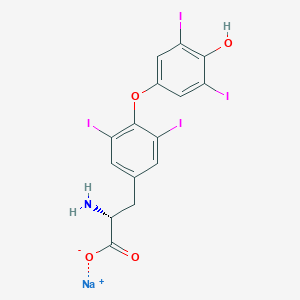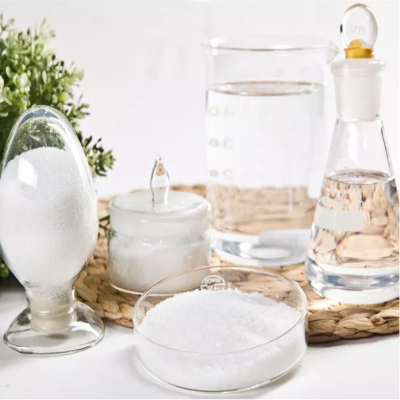-
Categories
-
Pharmaceutical Intermediates
-
Active Pharmaceutical Ingredients
-
Food Additives
- Industrial Coatings
- Agrochemicals
- Dyes and Pigments
- Surfactant
- Flavors and Fragrances
- Chemical Reagents
- Catalyst and Auxiliary
- Natural Products
- Inorganic Chemistry
-
Organic Chemistry
-
Biochemical Engineering
- Analytical Chemistry
- Cosmetic Ingredient
-
Pharmaceutical Intermediates
Promotion
ECHEMI Mall
Wholesale
Weekly Price
Exhibition
News
-
Trade Service
In order to protect consumer health and safety, various countries and regions of the world will develop food of the sampling plan and implement food safety supervision and inspection , for example, China issued an annual "food safety sampling plan" implementation rules and food safety risk monitoring plan
.
New Zealand's National Chemical Contaminant Monitoring Program NCCP and Microbial Monitoring Program IVP are monitoring programs specifically for products of high concern such as dairy products and infant formula
.
China, as the New Zealand dairy importing countries, in 2008, signed with New Zealand "government People's Republic of China and the Government of New Zealand Free Trade Agreement", in order to help China's imports of New Zealand dairy producers better understand the New Zealand dairy regulation to To ensure the safety of imported and used products, Food Partner Network will introduce to you New Zealand’s NCCP and IVP plans
.
.
New Zealand's National Chemical Contaminant Monitoring Program NCCP and Microbial Monitoring Program IVP are monitoring programs specifically for products of high concern such as dairy products and infant formula
.
China, as the New Zealand dairy importing countries, in 2008, signed with New Zealand "government People's Republic of China and the Government of New Zealand Free Trade Agreement", in order to help China's imports of New Zealand dairy producers better understand the New Zealand dairy regulation to To ensure the safety of imported and used products, Food Partner Network will introduce to you New Zealand’s NCCP and IVP plans
.
1.
What are NCCP and IVP?
What are NCCP and IVP?
Both NCCP and IVP are official plans under the New Zealand Animal Products Act, which are implemented and implemented by the New Zealand Food Safety Agency under the New Zealand Department of Primary Products (MPI)
.
New Zealand initiated the dairy product sampling inspection program in 1996, and subsequently, in accordance with the Dairy Industry Regulations (National Residue Monitoring Program) (2002), formulated a detailed monitoring plan specifically for the fiscal year of dairy products (the fiscal year monitoring is 7 per year).
From 1st to June 30th of the following year), the purpose is to ensure the quality of dairy products and the safety of dairy product labels in the domestic and export markets
.
The testing scope of NCCP and IVP includes both dairy product sampling and risk monitoring
.
.
New Zealand initiated the dairy product sampling inspection program in 1996, and subsequently, in accordance with the Dairy Industry Regulations (National Residue Monitoring Program) (2002), formulated a detailed monitoring plan specifically for the fiscal year of dairy products (the fiscal year monitoring is 7 per year).
From 1st to June 30th of the following year), the purpose is to ensure the quality of dairy products and the safety of dairy product labels in the domestic and export markets
.
The testing scope of NCCP and IVP includes both dairy product sampling and risk monitoring
.
2.
NCCP and IVP monitoring data collection method
NCCP and IVP monitoring data collection method
NCCP collects data mainly in three ways:
Random monitoring: Randomly select dairy farms and dairy manufacturers throughout the dairy season.
As part of the sampling system, manufacturers will not be notified of sampling in advance; targeted monitoring (for higher-risk substances and operations): targeted sampling or targets Sampling is based on the risks associated with the compound and its use, the existing level of control, and the information available to the New Zealand Ministry of Primary Industries (MPI)
.
For example, in 2020/2021, more attention will be paid to substance residues in bovine colostrum; research (for substances with little or no historical data): used to fill knowledge gaps
.
Research may not only monitor dairy products-but also animal feed
.
As part of the sampling system, manufacturers will not be notified of sampling in advance; targeted monitoring (for higher-risk substances and operations): targeted sampling or targets Sampling is based on the risks associated with the compound and its use, the existing level of control, and the information available to the New Zealand Ministry of Primary Industries (MPI)
.
For example, in 2020/2021, more attention will be paid to substance residues in bovine colostrum; research (for substances with little or no historical data): used to fill knowledge gaps
.
Research may not only monitor dairy products-but also animal feed
.
IVP monitoring sample collection method
Most of the selected samples are the final products manufactured by qualified dairy producers
.
In addition to cow dairy products, it also includes a small part of goat dairy products and sheep dairy products
.
.
In addition to cow dairy products, it also includes a small part of goat dairy products and sheep dairy products
.
3.
Product categories monitored by NCC and IVP
Product categories monitored by NCC and IVP
The products sampled by NCCP are divided into raw milk, colostrum and dairy products
.
.
Dairy product monitoring is to take samples from dairy product manufacturers and divide the products into six major categories according to the sampling procedures:
1) Milk powder: whole milk powder, skimmed milk powder, cream powder and other milk powder, etc.
;
;
2) Nutritional products: infant formula, follow-up formula, children's milk powder or base powder and nutritional powder products, etc.
;
;
3) Protein products: whey protein concentrate, milk protein concentrate, casein, sodium caseinate, etc.
;
;
4) Liquid products: pasteurized milk, UHT milk (sterilized milk), dairy product mixtures and cream, etc.
;
;
5) Milk fat: anhydrous cream (AFM) and butter, etc.
;
;
6) Cheese: all kinds of soft cheese and hard cheese
.
.
The sampling quantity and proportion of the above 6 categories of products are arranged in descending order.
Generally, the sampling quantity of the first two types of products will account for more than 70% of the total sampling quantity
.
Generally, the sampling quantity of the first two types of products will account for more than 70% of the total sampling quantity
.
IVP's monitoring products include raw milk and dairy products.
Dairy products are divided into special dietary foods and ordinary foods
.
Dairy products are divided into special dietary foods and ordinary foods
.
1) Special dietary foods include: infant formula foods, infant foods, foods for pregnant women, etc.
, among which infant formulas have the highest sampling proportion;
, among which infant formulas have the highest sampling proportion;
2) Common foods include: milk powder, protein products, cheese, yogurt, butter, anhydrous cream and other dairy products
.
.
4.
NCCP and IVP monitoring items
NCCP and IVP monitoring items
With the expansion of NCCP sampling items, in addition to pesticide residues, veterinary drugs, heavy metals and other chemical residues, natural ingredients and nutritional fortification elements in products are also included.
The main items are as follows:
The main items are as follows:
1) Residues of antibiotics and other veterinary drugs: such as steroid hormones, tetracycline veterinary drugs, etc.
;
;
2) Pesticides: pesticides such as diazinon, chlornitrosamine, etc.
;
;
3) Compounds that have been withdrawn or not allowed to be used or used with food animals: such as nitrofuran compounds;
4) Products that are not allowed to be used in dairy products or contact materials: such as melamine, cyanuric acid, etc.
;
;
5) Chemical pollutants: such as aflatoxin M1, phthalate compounds, etc.
;
;
6) Chemical elements (including heavy metal elements, food additives and nutrition fortifiers): such as lead, arsenic, sodium, calcium, zinc, etc.
;
;
7) Natural components of milk and dairy products: such as protein, ash, moisture, etc.
in infant formula food;
in infant formula food;
8) Ingredients added to the product: such as DHA and ARA in infant and older infant formula foods
.
.
Unlike China, in addition to raw milk, New Zealand will also pay attention to various veterinary drug residues in dairy products.
For example, in the 2017/2018 fiscal year, it tested estriol, Diethylstilbestrol, melengestrol and other substances remain
.
Since the NCCP plan for each fiscal year must be re-formulated with reference to the previous year's testing situation and international requirements, the detailed testing items will not be the same in each fiscal year
.
For example, in the 2017/2018 fiscal year, it tested estriol, Diethylstilbestrol, melengestrol and other substances remain
.
Since the NCCP plan for each fiscal year must be re-formulated with reference to the previous year's testing situation and international requirements, the detailed testing items will not be the same in each fiscal year
.
The microbiological project monitored by IVP mainly includes two parts: pathogenic microbiological indicators related to food safety and microbiological indicators for evaluating the sanitation of the production process
.
.
Pathogenic bacteria mainly include: Salmonella, Listeria monocytogenes, Escherichia coli, coagulase-positive Staphylococcus aureus, Bacillus cereus, and Crocodile in infant formula for infants 0-6 months old.
Noobacter
.
Noobacter
.
Sanitary indicators include: total number of colonies (cultivated at 30°C for 72 hours), coliforms and spores of sulfite-reducing clostridia
.
.
summary
It is worthy of recognition that the chemical residue and microbiological test results of dairy products in New Zealand in the past three years are all 100% qualified
.
When New Zealand's NCCP formulated its plan for the next year, it fully considered the domestic production situation, internationally concerned pollutants, and the special requirements of the exporting countries, which provided a positive reference and reference for our national food safety sampling inspections
.
.
When New Zealand's NCCP formulated its plan for the next year, it fully considered the domestic production situation, internationally concerned pollutants, and the special requirements of the exporting countries, which provided a positive reference and reference for our national food safety sampling inspections
.







